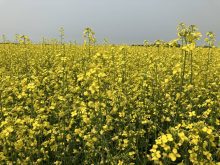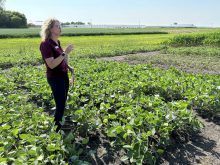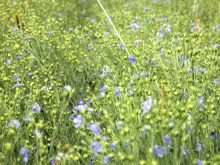At first glance, the annual Guidelines for Estimating Crop Production Costs released every January looks like good bedtime reading for insomniacs.
But sort through the numbers and analysis, and the story that emerges is full of mystery and intrigue.
These production estimates are designed to give farmers a reference for determining which crops make the best dollars and the best sense for their farms. Individual farmers may have higher or lower costs and revenue expectations based on their own situations.
For example, some still grow their own livestock feed, which is a possible explanation for why farmers continue to grow barley in this province.
Read Also

Manitoba sclerotinia picture mixed for 2025
Variations in weather and crop development in this year’s Manitoba canola fields make blanket sclerotinia outlooks hard to pin down
Manitoba Agriculture is one of the few — if not the only — provincial extensions services that continue to do this kind of analysis. One of its resources is crop insurance data collected annually from farmers, information that reflects what they actually do on their farms.
This year, the estimates provide additional analysis on AgriInsurance coverage ratios, showing which crops are more risky to grow based on available coverage levels. Based on that analysis, the crops that generate the most reward for the least risk include peas, corn, and Prairie Spring wheat.
It also includes risk and sensitivity analysis — a stress test that indicates how the profitability might change if market prices and yields drop.
Besides that, the numbers provide an interesting snapshot of crop production economics in Manitoba.
By the numbers:
Number of grain, oilseed and pulse crops routinely grown in Manitoba: 17;
Number of crops that cost less than $300 per acre to produce: 1 (fall rye $293.39 per acre);
Gross revenue ranking for fall rye: 17 ($261);
Profitability ranking for fall rye: 15;
Most expensive field crop to grow: corn $521.87;
Gross revenue ranking for corn: 1 ($564);
Profitability ranking for corn: 3;
Acres sown to corn in 2017: 395,526;
Crop ranked No. 1 for profitability: pinto beans, ($78.37 per acre over costs);
Acres sown to pinto beans in 2017: 52,048;
Crop ranked No. 17 for profitability: barley (negative $64.08 after costs);
Acres sown to barley in 2017: 246,696;
Most common crop rotation in Manitoba: hard red spring wheat, canola;
Crop rotation with the lowest marginal returns of four rotations analyzed: hard red spring wheat, canola ($197 per acre);
Crop rotation with the highest marginal returns: corn, canola, hard red spring wheat, soybeans ($363 per acre).
Roy Arnott a provincial extension worker who helps prepare these annual estimates, says the data supports the time-worn message about the value of diversity in cropping systems.
“Diverse rotations have agronomic benefits and they also have a corresponding economic benefit as well,” Arnott said.
Arnott, a self-professed “numbers guy” was surprised at the dominance of canola, wheat and soybeans in Manitoba.
One of those crops is a relatively new arrival on the local scene — soybeans. Its popularity has surged in recent years because of improved shorter-season varieties, better crop insurance coverage and the fact that it performs relatively well under excess moisture conditions. “Soybeans have been carving out acres at the expense of wheat and canola,” Arnott said.
As well, he noted crops such as barley, winter wheat and fall rye are likely to continue to fall out of favour unless something happens to improve their profitability. There are lots of good reasons for farmers to grow these crops. Barley is an extremely competitive crop against weeds. Fall-seeded crops change up the weed and disease spectrum. But if farmers can’t beat the odds on profitability, those benefits are eroded.
Anastasia Kubinec, an extension agronomist who is also part of a multi-generational farming operation, sees it a little differently. She too advocates greater diversity in rotations, but notes farmers have a lot of things to juggle when deciding which crops to grow.
Not all special crops can be grown in all areas due to geography and climate. Farms are getting bigger. Labour is an issue. Farmhands are in short supply. The last census found 44 per cent of farmers also rely on off-farm work to supplement their farm income.
The tried-and-true wheat-canola rotation has provided farmers with good yields, easily accessible marketing opportunities, decent prices and simplicity. “Just because it’s not the best rotation doesn’t mean it’s not working,” she said.
Soybeans are an easy fit with that, with the added advantage of being so new on the local scene that the pests haven’t caught up to it — yet.
Specialty crops may be higher value, but they also require different equipment, specialized production knowledge and secure access to markets. Farmers can only spread themselves so thin.
There is the added wild card of weather and soil moisture conditions. Many fields in southern Manitoba have little snow cover, which sets the stage for a dry spring. That may cause farmers to shift their seeding plans to crops that have a better chance of weathering a drought.
In the age of data-driven farming and precision agriculture, farmers are more capable than ever of knowing what’s happening on their own farms. It’s helpful to know how that compares.
In the end, farmers must find their own balance between the potential, the reality and what’s practical.




















